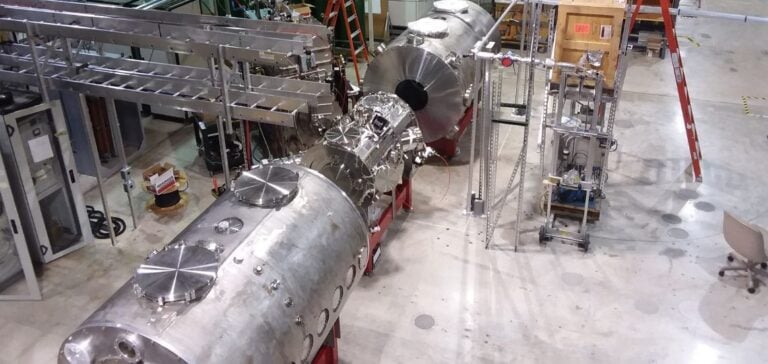The achievement of new records in fusion energy represents a significant step towards the realization of a clean and sustainable energy source. Realta Fusion, a fusion energy start-up in the USA, in collaboration with researchers at the University of Wisconsin, recently set a new record for the magnetic field in a fusion plasma. The magnetic field achieved is 17 Tesla, a crucial milestone for the development of commercial fusion energy systems.
The project, known as Wisconsin HTS Axisymmetric Mirror (WHAM), is the first to use high-temperature superconducting (HTS) magnets in a magnetic mirror configuration. These advances enable plasma to be confined at unprecedented levels of density, paving the way for more efficient and cost-effective fusion energy systems. In addition to private investment, the US authorities, via the Department of Energy, have announced a new energy revolution thanks to nuclear fusion.
A major technological advance
Magnetic Confinement Fusion (MCF) involves creating the conditions necessary for fusion by trapping a high-energy plasma in a “magnetic bottle”. The use of ultra-high-field magnets is a key technical step towards the realization of fusion energy systems. The WHAM device is the first to integrate HTS magnets with multiple high-power plasma heating systems and advanced plasma control.
According to Professor Cary Forest of the University of Wisconsin and Scientific Director of Realta Fusion, “This is the culmination of an immense effort by the WHAM team, and a significant step towards fusion power plants. With the WHAM experiment, we have combined advances in superconductor technology and plasma physics to demonstrate the potential of the compact magnetic mirror as a fusion energy system.”
Rediscovery and innovation
The magnetic mirror was one of the main concepts of fusion energy in the USA until the 1980s, when the technology of the time limited the control of magnetically confined plasma. Recent advances in superconductor technology – notably HTS magnets – and plasma stability control encouraged Professor Forest, Dr. Jay Anderson (Senior Scientist at the University of Wisconsin and co-founder of Realta Fusion) and their collaborators to revisit the magnetic mirror and design a much more compact and less expensive system than previous experiments.
“What we’ve demonstrated today puts the compact magnetic mirror back in the race towards commercial fusion energy. It’s a quantum leap for a concept that promises economically viable, carbon-free heat and power,” said Kieran Furlong, CEO of Realta Fusion.
Realta Fusion, a private company backed by venture capitalists, emerged from the WHAM project in 2022 with the mission of developing a fusion energy system based on the WHAM concept. Realta scientists worked alongside researchers from the University of Wisconsin to achieve this milestone. Realta continues to fund and staff the ongoing WHAM project through a sponsored research agreement with the University of Wisconsin. The ARPA-E division of the U.S. Department of Energy has invested over $10 million in the project, with significant contributions from the University of Wisconsin, the Wisconsin Alumni Research Foundation (WARF), Commonwealth Fusion Systems (CFS) and other partners. CFS designed and manufactured the two 17 T axisymmetric HTS magnets used in the experiment.
The success of this demonstration confirms the technical feasibility of magnetic mirror fusion and brings the industry one step closer to commercial fusion energy. Further research could revolutionize the global energy landscape by providing an abundant, clean and sustainable source of energy.





















